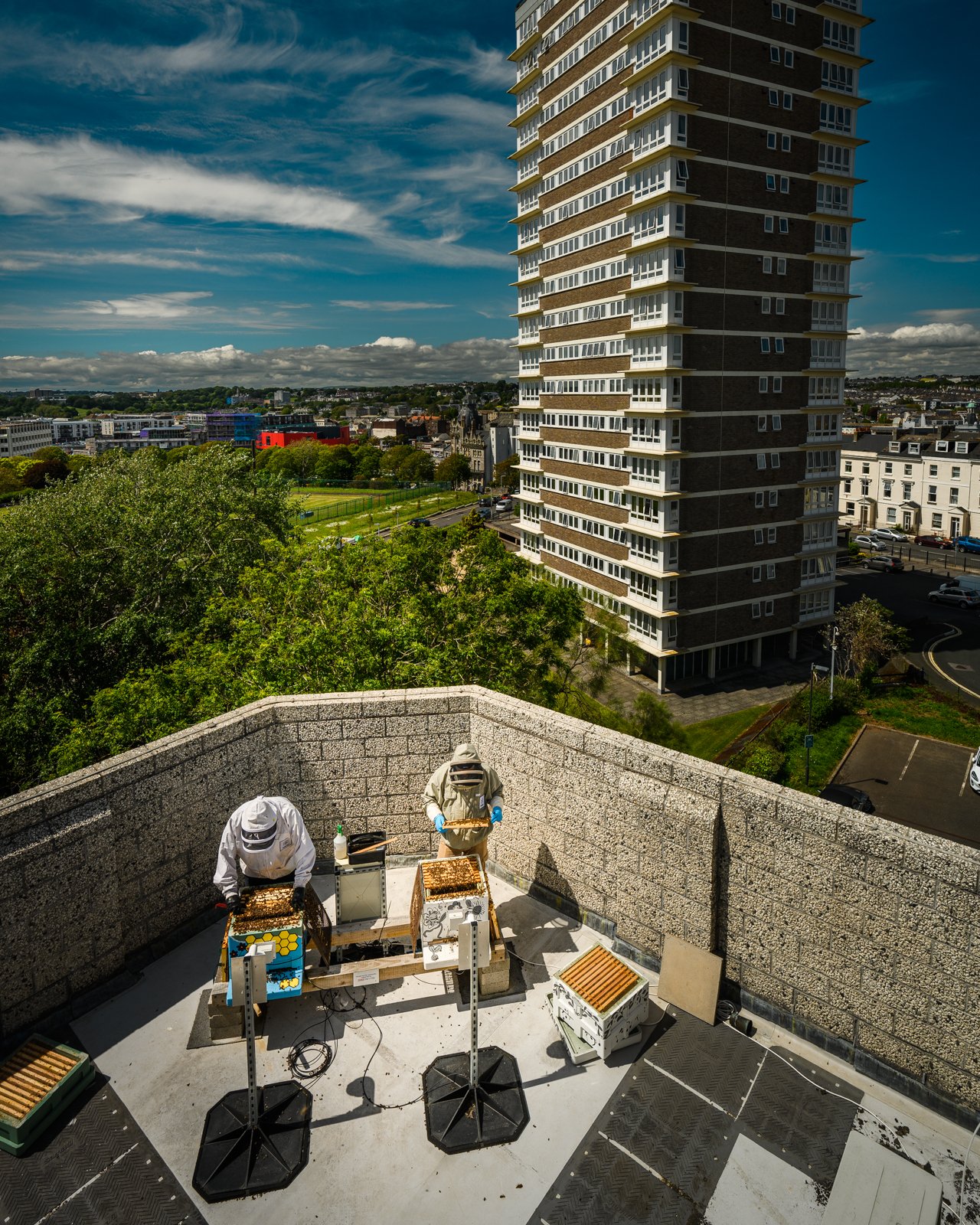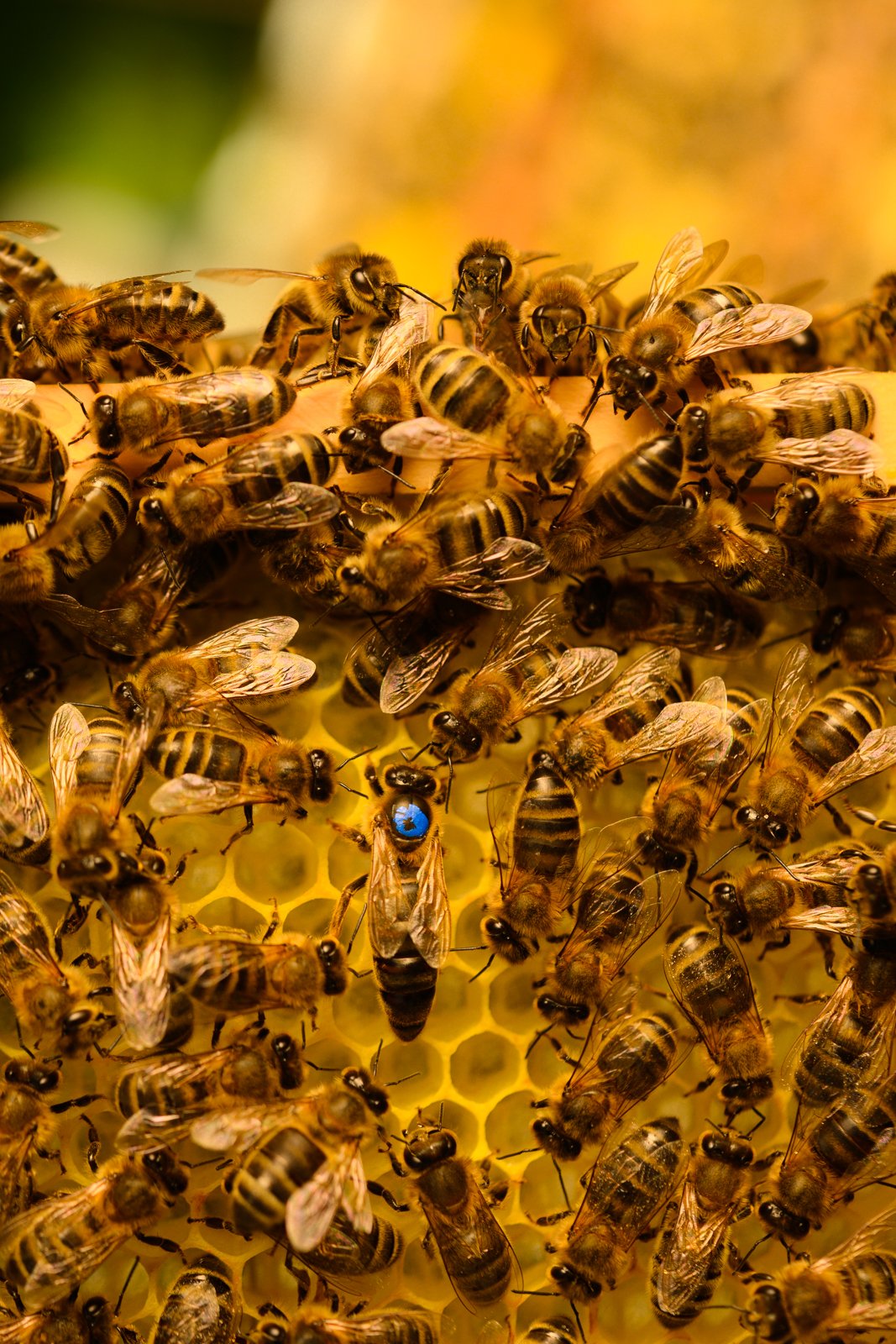What is Urban Beekeeping?
At Pollenize, we’re passionate about natural beekeeping and its transformative impact in urban settings. Urban beekeeping is the practice of maintaining bees within city environments, enabling us to return to a less industrialised method of honey production by nurturing small-scale colonies that pollinate urban gardens and green spaces.
Throughout the 21st century, urban apiculture has experienced a renaissance and is now widely recognised as a burgeoning trend. Cities such as Paris, Berlin, London, Tokyo, Washington DC, and even Plymouth have embraced modern beekeeping by legalising it in areas where it was previously prohibited.
Intriguingly, research has shown that “city bees” often enjoy better health than their “rural” counterparts. This is because urban areas tend to have reduced pesticide exposure and increased biodiversity. Although urban bees may struggle to find forage, homeowners can contribute to the creation of vital wildlife corridors by planting flowers that offer nectar and pollen to pollinating insects. Establishing a year-round, continuous bloom environment is the key to promoting optimal colony reproduction.
Although humans have been harvesting honey from beehives for millennia, honeybees were only introduced to English colonies in the 1670s. The emergence of supermarkets, fast food, and agribusiness following WWII led to a disconnection between people and their understanding of food sources, including honey.
The urban beekeeping movement was first championed in 1980s Paris when experimental hives atop the renowned Opera Garnier proved highly successful, leading to the birth of a new industry in France. Today, the greater metropolitan Paris area boasts over 3,000 hives, and the practice of urban beekeeping has proliferated worldwide. In recent decades, growing environmental awareness has spurred a renewed interest in sustainable and artisanal food production methods. This shift has driven a revival in urban farming and beekeeping, with urban beekeeping playing a crucial role in making cities and their buildings greener.
In Plymouth, we at Pollenize have established a network of urban apiaries at iconic landmarks throughout the city, many situated on rooftops. Our strategic placement of bee colonies not only amplifies our message of pollinator conservation but also enables us to engage major Plymouth organisations in our efforts to promote sustainability and biodiversity.
WHAT CHALLENGES ARE THERE IN KEEPING BEES IN AN URBAN ENVIRONMENT?
While urban beekeeping as a practice is much the same as in suburban and rural areas, urban beekeepers face some unique challenges:
Urban Beehive Placement
The main challenge is not lack of places to put beehives in cities but challenging the status quo. With space at a premium in cities, it’s often hard to find suitable ground-level plots of land. Instead of looking on the ground, we should look up—to building roofs.
Human/Bee Interaction
While honey bees have been bred for safety and pose little threat to humans if left undisturbed, the high population number of humans within cities mean that sites should be carefully selected so to minimise their interactions with honey bee colonies.
Pollinator Habitat Loss
Loss of habitat through urbanisation is a problem for pollinators globally. The solution, and one that many land owners and developers are embracing more in current years is greener city planning. This includes the addition of garden-level pollinator habitats and rooftop gardens or living walls on new renovated structures.
WHAT ARE THE BENEFITS OF KEEPING BEES IN AN URBAN ENVIRONMENT?
Urban beekeeping brings many benefits to cities around the world–from scientific data collection, biodiversity, and supporting green initiatives.
Critical data for studies focused on Pollinator Health
Honeybees are important bioindicators for environmental health and excellent sources of data. Promoting greener cities in turn creates more reliable test beds; with urban honey bees acting has very effective measurement tools.
Pollenize keeps bees in an urban environment for research and community engagement purposes. We use our honey bees to better understand foraging behaviours of all pollinators. We also study bee genetics to promote and protect our native species ( apis melifera melifera).
Pollinates local urban agriculture and greenery
Urban beekeeping helps support local food systems by pollinating parks, gardens and urban farms as well as providing people with locally produced honey. Honey bees play a critical role in our food system accounting for the pollination of over 85 different crops. Without them our agricultural system would collapse and the population of native pollinators would be unable to replace the capacity of honey bees.
Connects urban citizens to nature
Honey bees have long been associated with the abundance of beauty and nature; urban beehives are a symbol of nature in the city, helping city residents and workers reconnect with their natural environment. Find out about our community beekeeping
Engages tenants and employees with conservation
Hosting an apiary is an easy way for organisations to demonstrate a commitment to sustainability, enhancing brand image and ESG performance. Beekeeping is also a great way to engage staff in corporate sustainability through pollinator education programmes or events.
THE PROBLEMS & MISPERCEPTIONS
Does urban beekeeping affect other native Pollinators?
Bees are critically important pollinators, and they’re dying in frightening numbers with human activity playing a key role in that decline. At Pollenize we use our research on honey bees as a vehicle to green recovery, with urban beekeeping fuelling much needed conversations with the general public about insect decline as a whole.
The conversation is now starting to include not only honey bees but bumble bees, solitary bees and other species of pollinators ( The UK has 1,500 native species. )
New research is helping us to better understand how pollinators coexist under different conditions. The results of some studies suggest that honeybees compete directly with other pollinators which is why we believe it is important to carefully manage the number of hives in any given area.
The key to helping combat this competition of species is simply creating more nesting and foraging habitats to accommodate growing pollinator populations.
Recognising the importance of native pollinator health, we will continue to use data collected from our honey bee hives to drive forward the scientific study of ALL pollinators.
Are beehives dangerous to have near public spaces?
Another presumed problem with urban beekeeping is the greater proximity of bees to people in urban environments. This is based on a misconception that bees are aggressive insects that are dangerous to people. Like sharks, bees often get a bad rep in cartoons and on film to appear angry and full of threat. When swarming (though it can look quite scary), bees are actually in a docile state and least likely to harm people.
It’s important to remember humans have been working and breeding honey bees for thousands of years, with safety being a desired trait. With urban beehives usually placed away from people, the only places where city dwellers are likely to encounter honey bees is by passing them pollinating flowers in window boxes, trees, and gardens.




